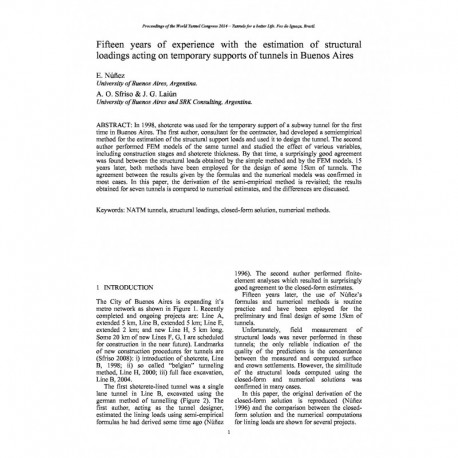Cart
0
0
No document
0,00 €
Total
Document successfully added to your shopping cart
Quantity
Total
There are 0 items in your cart.
There is 1 item in your cart.
Total documents
Total shipping
To be determined
Total
Search & filter
Search for a publication
Search & filter

Fifteen years of experience with the estimation of structural loadings acting on temporary supports of tunnels in Buenos Aires
pap586
E. Núñez / A. O. Sfriso / J. G. Laiún
In 1998, shotcrete was used for the temporary support of a subway tunnel for the first time in Buenos Aires. The first author, consultant for the contractor, had developed a semiempirical method for the estimation of the structural support loads and used it to design the tunnel. The second author performed FEM models of the same tunnel and studied the effect of various variables, including construction stages and shotcrete thickness. By that time, a surprisingly good agreement was found between the structural loads obtained by the simple method and by the FEM models. 15 years later, both methods have been employed for the design of some 15km of tunnels. The agreement between the results given by the formulas and the numerical models was confirmed in most cases. In this paper, the derivation of the semi-empirical method is revisited; the results obtained for seven tunnels is compared to numerical estimates, and the differences are discussed. Keywords: NATM tunnels, structural loadings, closed-form solution, numerical methods.


